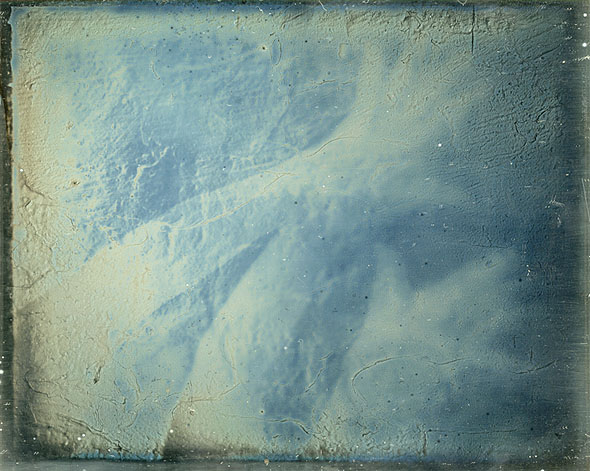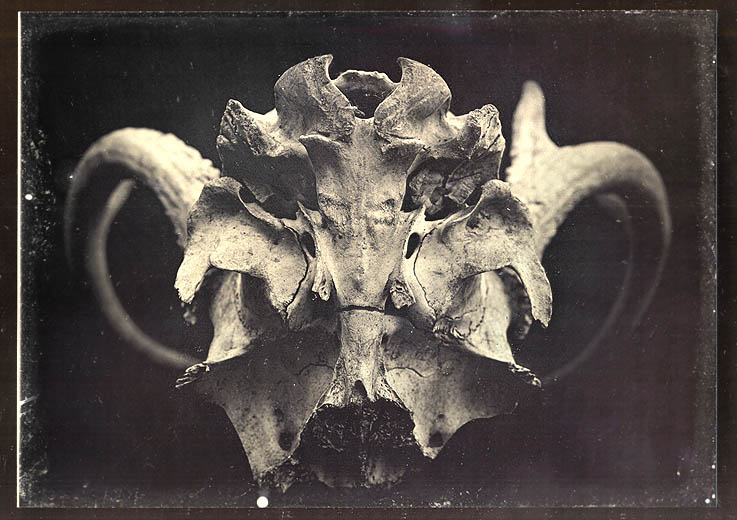
Michael Robinson: Astronomy Still Life
Today's daguerreians find that in order to be successful they need to research 19th-century techniques and add 20th-century technology to avoid some of the dangerous side effects of a process that often utilizes very deadly chemicals. They also find that they have to work out their own modern visions within the breathe and limitations of this process.
Most of these daguerreians also have strong connections to the Art World.
Mike Robinson has chosen to build on tradition by shooting slightly updated, but similar versions of still life and occupational themes that were important to 19th-century daguerreians.

Jerry Spagnoli: Anatomical Study (Hands and Hip)
Robinson's joint work with fellow Canadian artist Spring Hurlbut is just one reflection of this connection. In a joint effort, Robinson and Hurlbut worked to produce three progressive views of a wax-headed, circa-1917 mannequin from France as a series of 1/4-plate daguerreotypes. Spring Hurlbut is a noted Canadian artist known for her installations of period objects, including a show in 2001 at the Royal Ontario Museum published as The Final Sleep.
Mike Robinson's Century Darkroom in Toronto has gained a reputation in several alternative photographic processes. Robinson's work in the daguerreotype combines a classical sense of beauty with the high level of technical skill required for success in this difficult photographic medium.
His contribution to the modern daguerreotype has gained increasing recognition, and a series of Mike's daguerreotypes were recently commissioned for the holdings of the Hallmark Photographic Collection. He often houses his images in modern handcrafted cases and passé-partout mounts that resemble the older cases from France and the United States. This combination of old and new approaches is one of the things that distinguish Mike's work.
Jerry Spagnoli also explores some traditional themes, shooting street scenes, figure studies and some portraits, but in a very untraditional, postmodernist way.
Jerry Spagnoli is another photographer with strong ties to the art community. He worked recently with artist Chuck Close, executing daguerreotypes at Close's direction. He has also been helpful to contemporary artist Adam Fuss in that artist's own daguerreotype work. Spagnoli has had several major one-man shows and continues to participate in major group shows on alternative processes. His work reflects his modern environment in a way that requires the viewer to look more intensely. His new book "Jerry Spagnoli--Daguerreotypes" has just been printed by German publisher Steidl.
Charlie Schreiner has taken many different subjects, including still lifes, landscapes and portraits, his nude daguerreotypes and color photographs are perhaps his most significant and individualist work to date.
Astonishingly creative for such a difficult medium as daguerreotypes, these striking and erotic nudes are startlingly contemporary, while offering homage to 19th-century images. His daguerreotype of a stretched-out nude odalisque that is lit by the light of a television set is just one example of this juxtaposition of centuries and sensibilities.
Schreiner's daguerreotypes have been exhibited at the George Eastman House in Rochester, NY; Ohio State University; the Tri-Cities Museum in Grand Haven, MI; the New England School of Photography in Boston; the Oakland Museum; the North Light Gallery, University of Arizona; A Photographers Place, New York City; the Atlanta History Center; the Henry Ford Museum; the Nelson-Atkins Museum of Art; Grand Valley State University; Center for Photographic Art, Carmel, CA; 2004 International Fine Art Photography Exhibit, Ft. Collins, CO; Soho Photo, New York City, Best of Photography 2004.
Mark Kessell is a full-time artist and professional photographer living and working in New York City. He uses the daguerreotype to express a contemporary artistic vision quite different from the 19th-century aesthetic traditionally associated with this medium. His images explore a concept he calls "unknowability": the difficulty --perhaps impossibility--of real understanding between people. The daguerreotype mirrors--literally--the frustratingly elusive nature of intimacy and understanding.
In "The Scenic Daguerreotype" John Wood describes Irving Pobboravsky as "the dean of modern daguerreotypists" in recognition both of his pioneering role and his exceptional talent in turning the abandoned daguerreian process into a medium for contemporary art. Irving's first work with the daguerreotype began in the 1960s and continues today. Through his activities in Rochester NY, likewise home to the George Eastman House and its alternative process seminars, Pobboravsky has been an inspiration to many of the modern daguerreotypists who followed him.
Exhibited and Sold By
Contemporary Works / Vintage Works, Ltd.
258 Inverness Circle
Chalfont, Pennsylvania 18914 USA
Contact Alex Novak and Marthe Smith
Email info@vintageworks.net
Phone +1-215-518-6962
Call for an Appointment














Share This